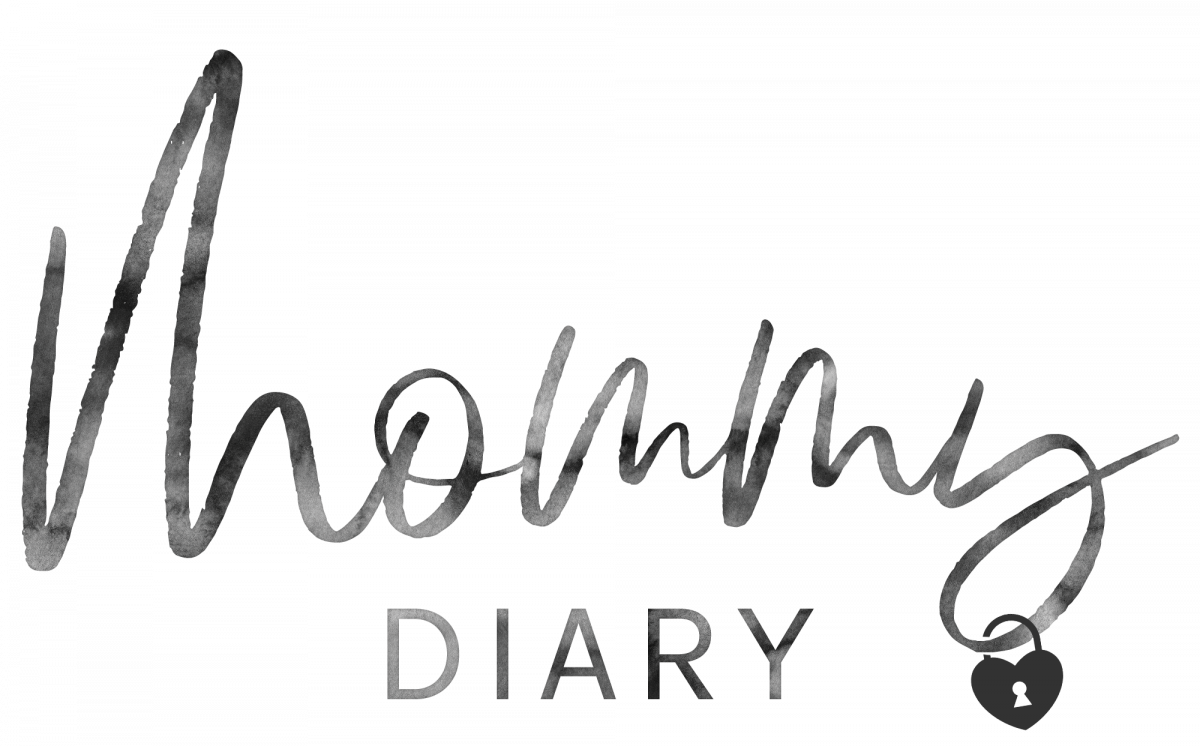Every child reaches a new milestone at their own pace, but there are ways to help your little one achieve a new task with confidence. One of those crucial moments is transitioning your toddler from using a bottle to a regular cup.
The American Academy of Pediatrics and the Academy of Pediatric Dentistry recommends weaning from breast or bottles between 12 months of age and 24 months of age.
While there are several reasons for this transition, the most pressing is that drinking from a bottle for extended periods can cause an increased risk for baby bottle tooth decay, oral development issues, and other associated infections due to laying down while drinking from the bottle.
On top of all of those reasons, mastering this new skill in early toddlerhood will continue to encourage “big kid” behavior over time.
As I go through this process with my youngest child and have been through the bottle-to-cup transition three times prior, I thought I’d share some essential tips on making this new milestone as smooth as possible for your toddler (and mom and dad)!
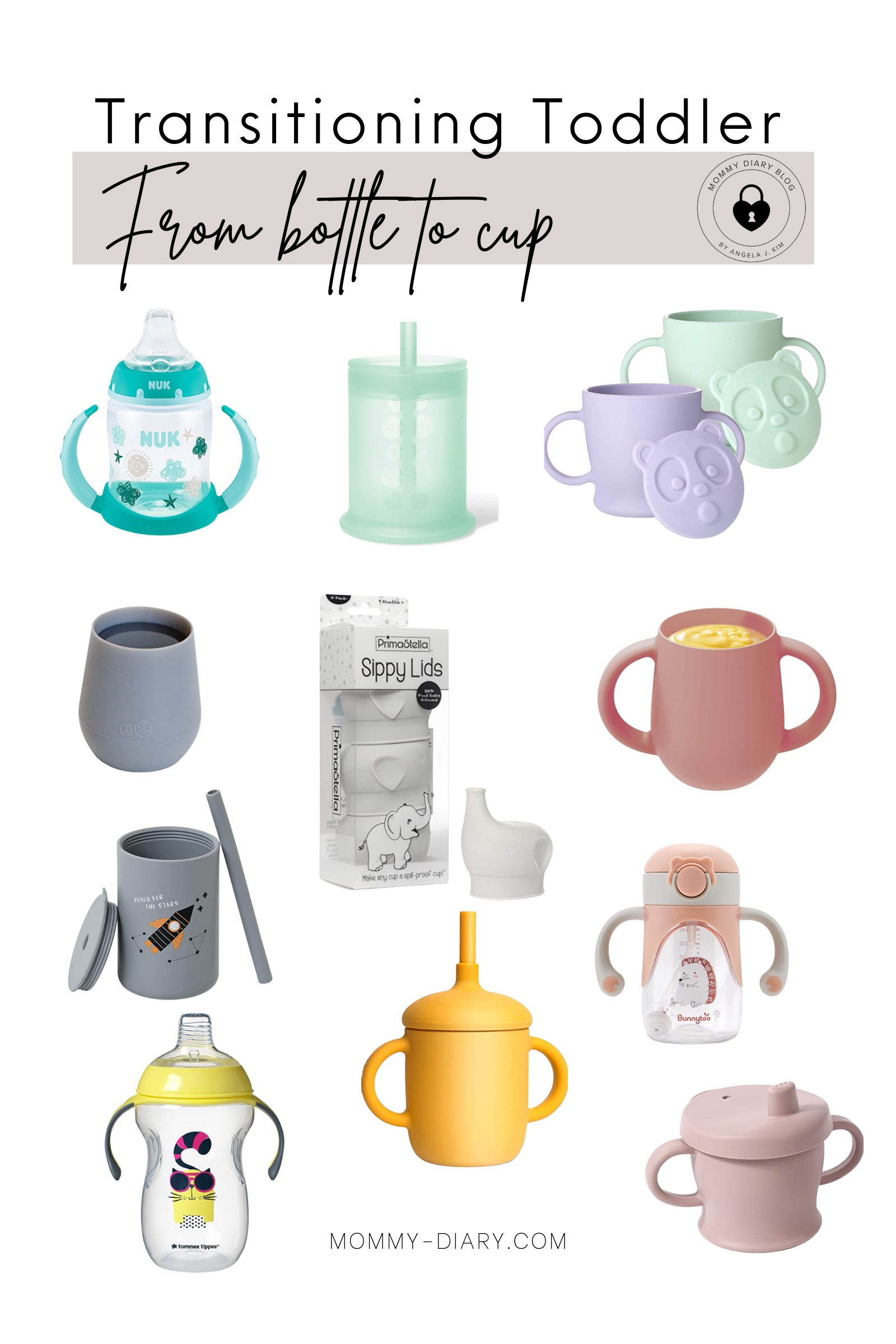
How To Transition a Toddler From Bottle To Cup
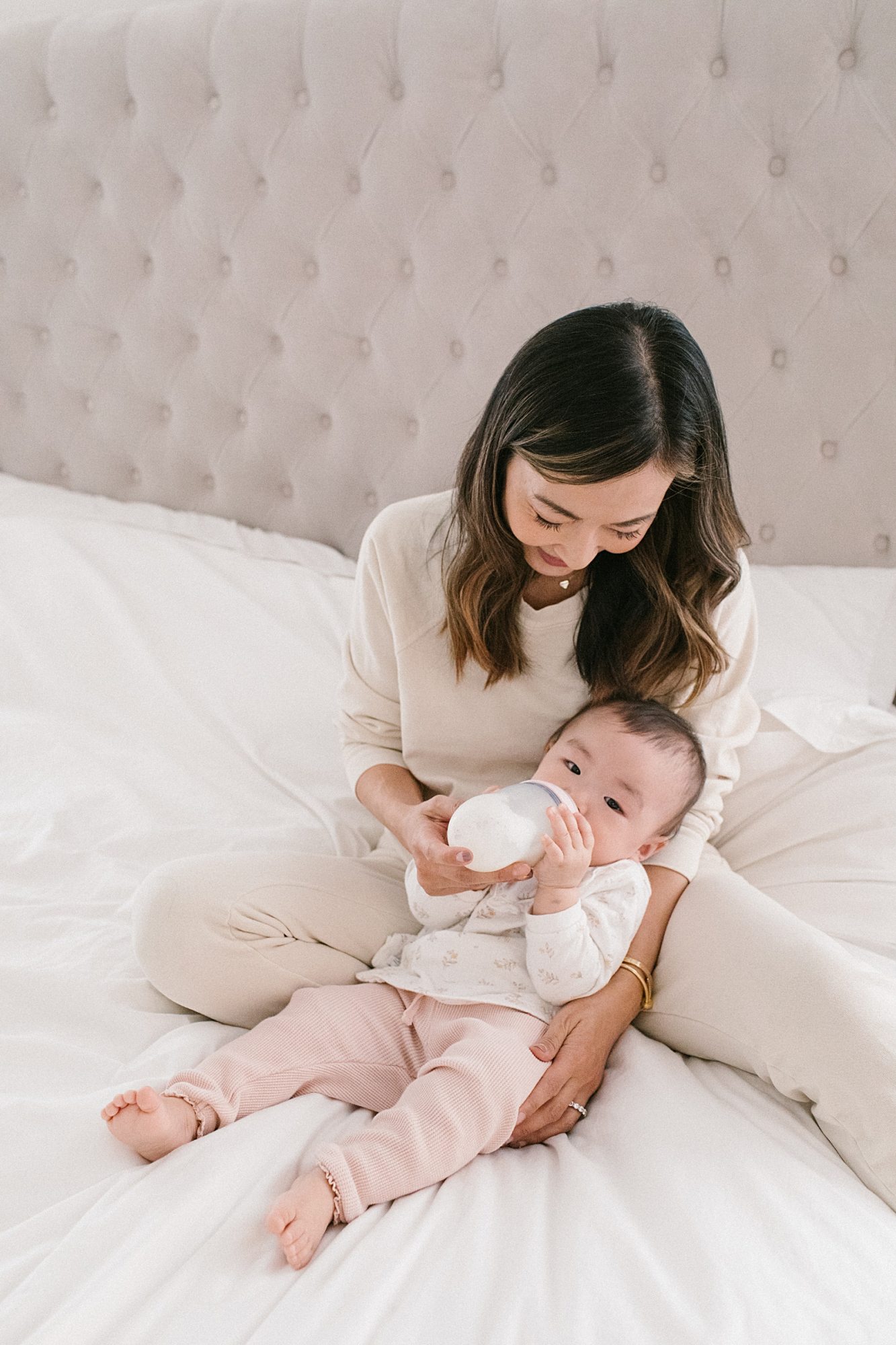
Start Early and Be Consistent
Whether your baby is bottle-fed or breastfed, as you start introducing solid foods around six months old, offer them a small amount of water in an open cup to get them used to the motion of drinking and the association of drinks with meals.
A good rule of thumb is to offer sips in a 1, 2, or 3 count, and then pull the cup away, repeating as needed between bites. You’ll be surprised at how quickly your baby will catch on to this new way of taking in liquids just by offering drinking water often.
Open-mouth cup drinking promotes good oral development as it causes your baby to use their jaw, mouth, and tongue differently than a bottle does. Thus further developing those oral motor skills your baby will need when eating solid foods later.
You can also try offering breast milk or formula in a cup with meals too. And, just like with anything, consistency is vital. The more you practice this new mealtime activity, the smoother a complete transition away from the baby bottle will be down the road.
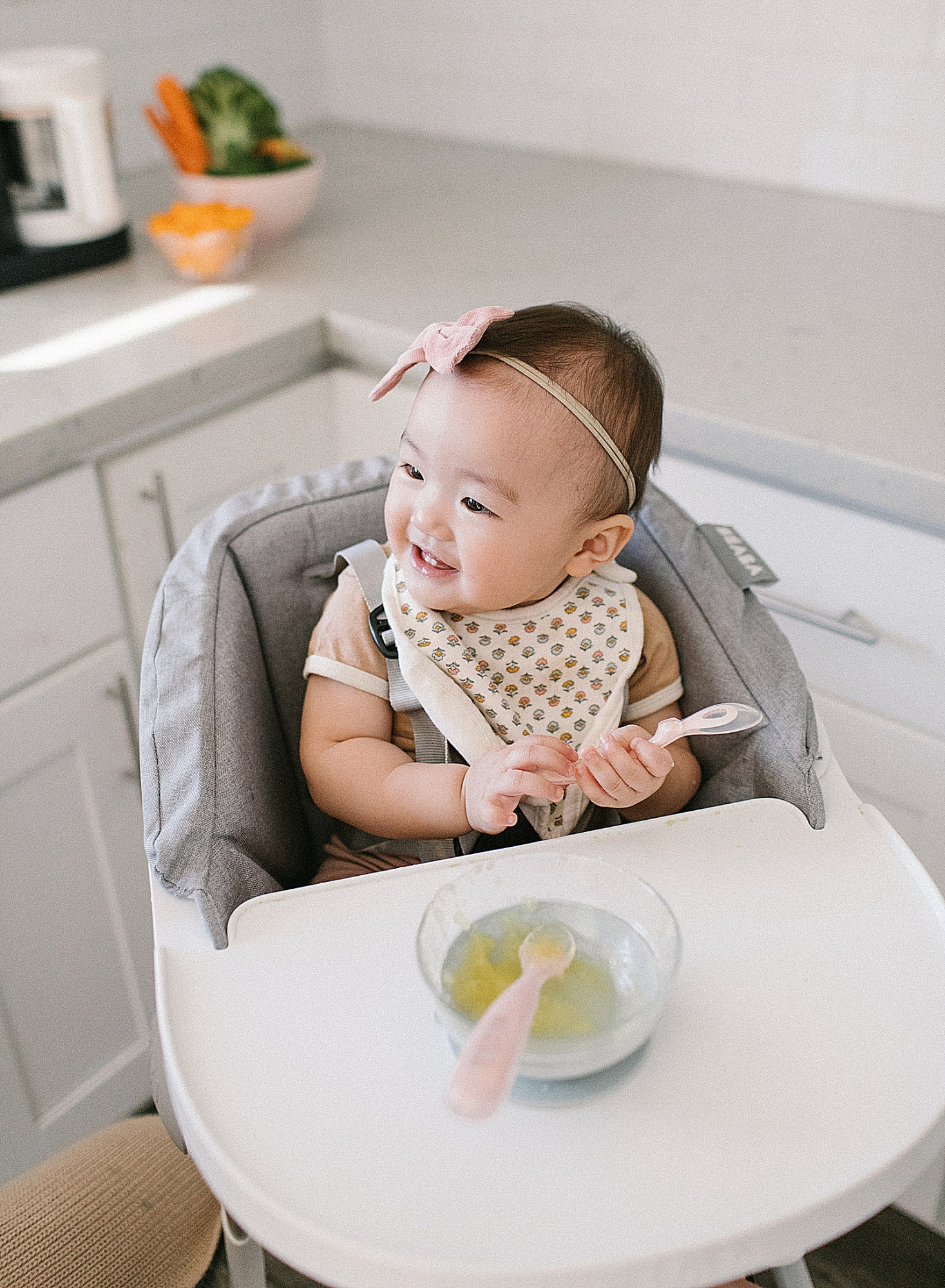
Swap Out With a Sippy Cup
The longer you wait to transition from the bottle after your baby turns one, the more difficult it will be to remove the attachment they’ve formed to it, much like a pacifier (a whole different topic!).
To help ease into the transition, around 12 to 18 months old, you can start by switching out one milk bottle per day with a spill-proof cup option or a silicone spout sippy cup. You can do this at the same time you switch from breast milk or formula to cow milk.
Introduce a cup with a straw and lid to promote drinking that encourages good oral development. This change may take your child a bit to adjust to, but by slowly swapping out other options for a bottle, the complete weaning transition will be a breeze.
Best Sippy Cup for Bottle Transition
Sippy cups and straw cups are great transition tools for toddlers. Providing a spill-proof option as they learn to manage the regular cup-to-mouth motion slowly and smoothly. Sippy cups, like any cup, should only be offered with meals or when your child expresses they are thirsty.
Allowing your little one to drink from a cup and walk around with it will encourage overdrinking, and an attachment can be formed, much like with the bottle.
I’ve linked a few of my go-to sippy cups, straw cups, and spill-proof options found on Amazon.
- NUK Learner Cup
- Haakaa Silicone Training Cup
- Tommee Tippee Soft Spout Sippy Cup
- Bonbay Straw Transition Cup with Handles
- ezpz Tiny Cup
- Olababy Silicone Training Cup
- PrimaStella No Spill Lid
- Silicone Training Cup with Handles and Lid
- Bunnytoo Weight Straw Sippy Cup
- JoyIt Learning Cup with Lid and Straw
- Open Mouth Silicone Cup with Handles
Quit Cold Turkey
Another approach to making the transition from bottle to cup is to cut the bottle out completely, cold turkey. While it may be a rough few days, you might be surprised that some toddlers won’t have any issues with the abrupt change.
Also, if you go this route, don’t make it a big deal. Just hand your baby the sippy cup or a transition cup at a meal and see how they react. By not making the difference from a bottle to a cup a big deal yourself, your toddler may adjust with ease.
If quitting bottles isn’t something you are ready to tackle, start small. Try cutting out the nighttime bottle feedings first. Offer their last milk or water with dinner, then no more until morning.
After dinner, continue your nighttime routine as usual, and don’t forget to start practicing with a toothbrush too! Brushing their teeth can be a fun activity for a toddler. It helps them feel like they have control and helps remove any of the sugars the milk may have left behind before bed — one of the main reasons bottles need to go soon into toddlerhood.
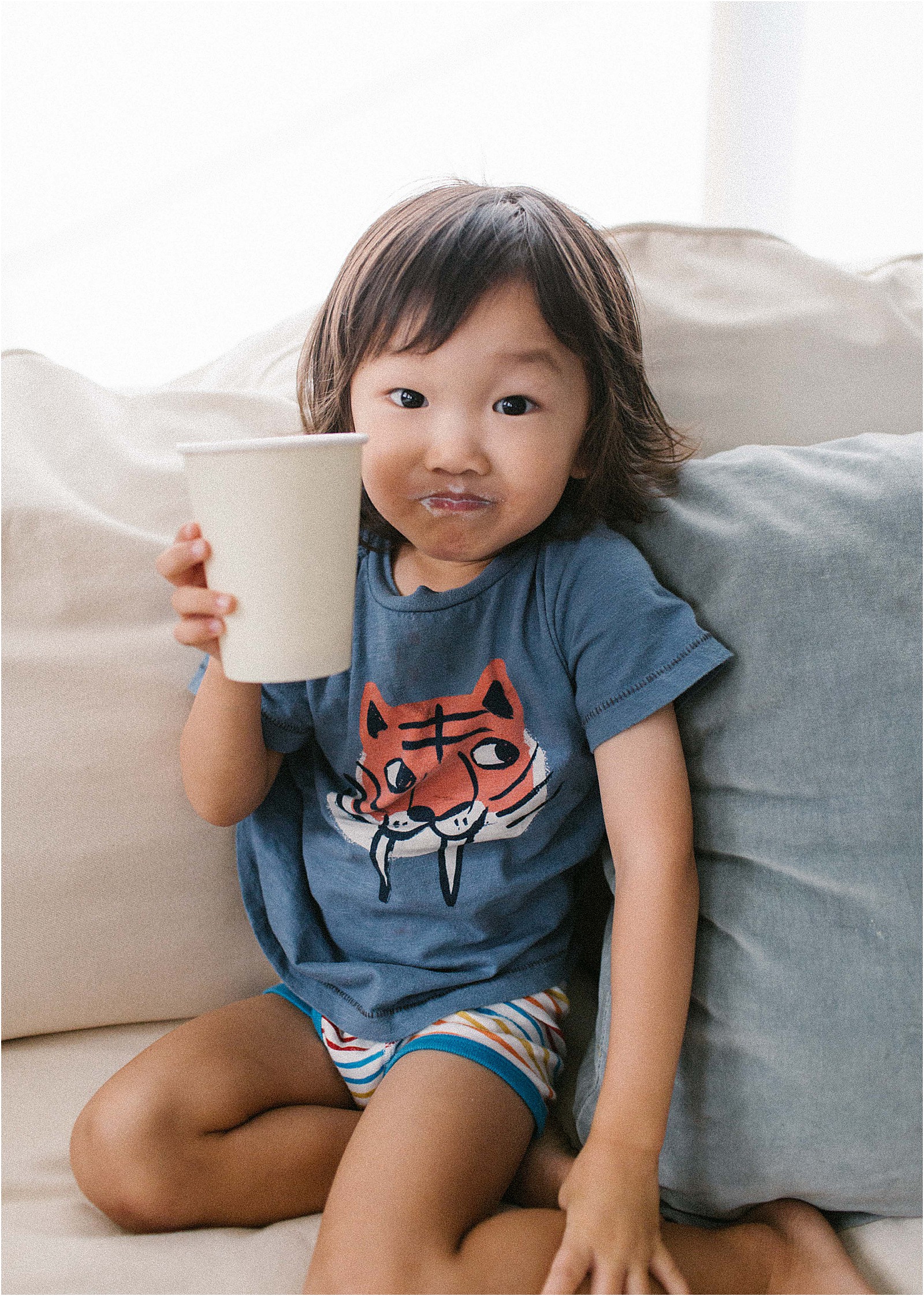
Don’t Stress and Make It Fun
The beginning stages of your baby becoming a toddler can be stressful enough for mama and baby. Take it one day at a time as you transition away from the bottle to a regular cup. You and your little one will get there eventually!
Make it fun by using songs, games, and silly commentary as you offer your child a cup or sippy cup. It might also help to refer to their new cup as a big kid cup. Praise your toddler for a good job when they take a sip or use the sippy cup without tears!
Like anything with parenting, change will take time and consistency for your toddler to feel confident and comfortable. Such as with a new drinking style or simply holding the cup. I hope these tips help you transition from bottle to sippy cup to regular cup smoothly and prepare your child for more fun to come as they grow into a big kid!
Are you going through this bottle-to-cup transition with your toddler? Do you have any experiences with prolonged bottle use? Share more tips and tricks in the comments!
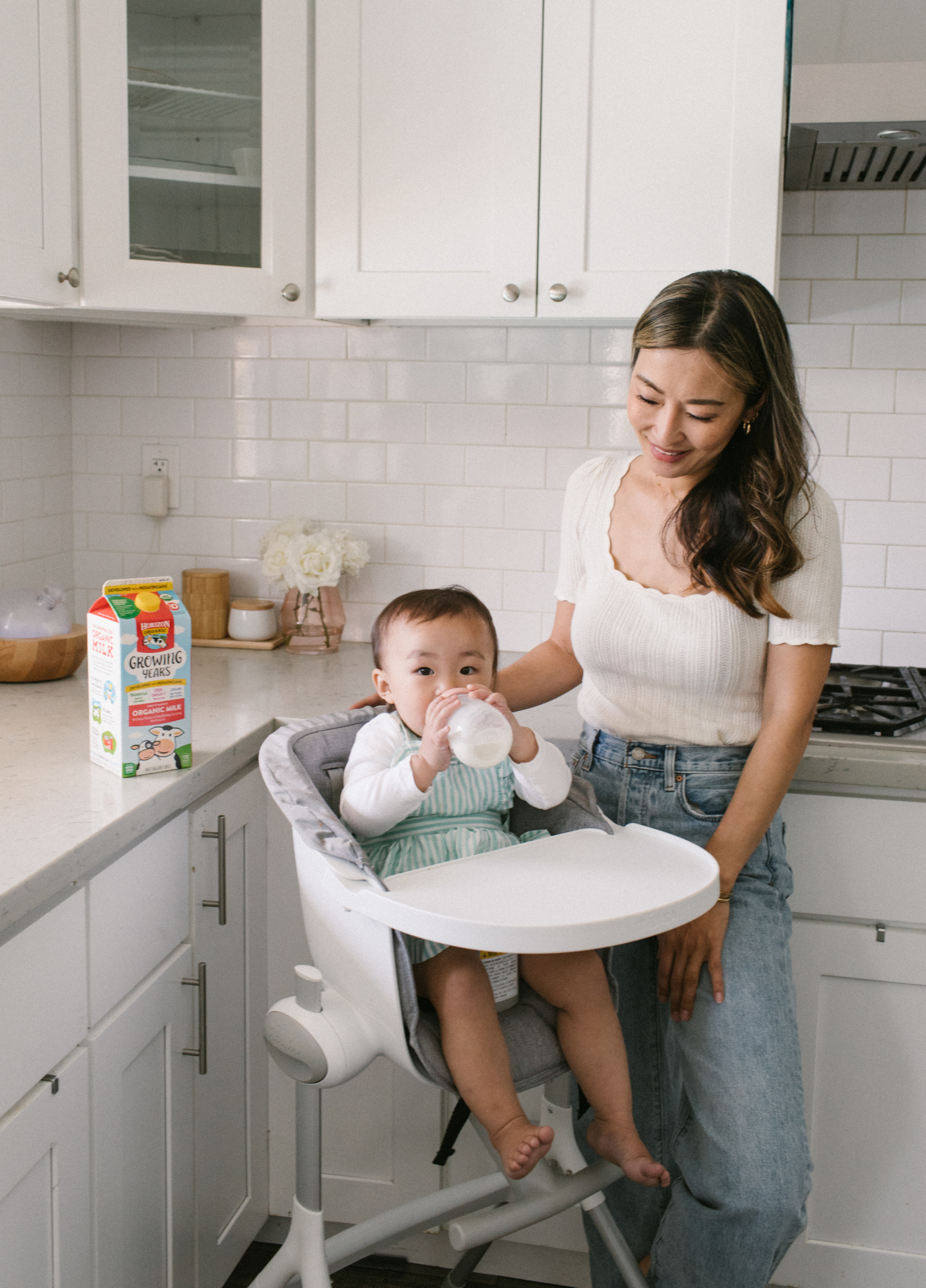
This post contains affiliate links that help support this blog at no additional cost. Thank you for your support which allows me to create valuable content for families all around the world.
